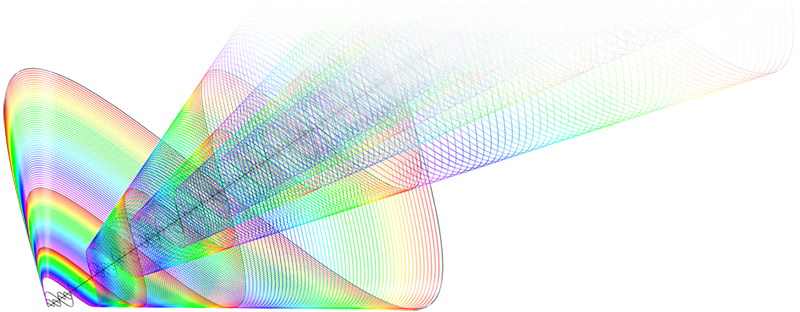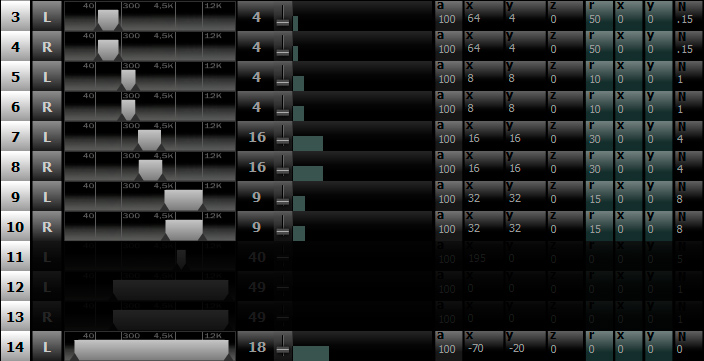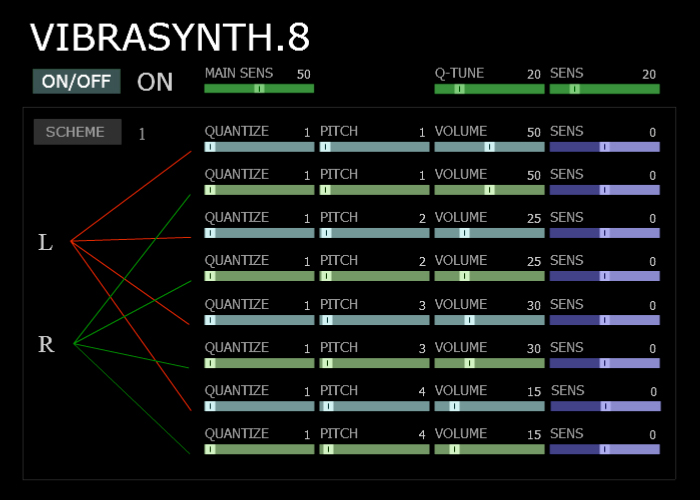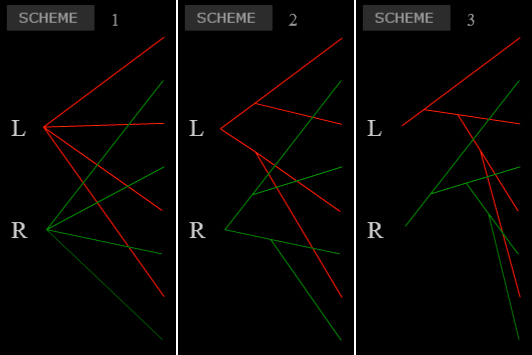Vibration resonance sound synthesis
Have you ever wondered how the sound affects the stay of things in yourself?
What determines the interaction of objects?
Do you know how neighbors hear your music?
These questions may seem strange, but they occupied and continue to occupy inquisitive minds. The nature of vibrations interested the ancient philosophers and is important for modern quantum physicists, interested in musicians and naturalists.

')
In order to broaden ideas about sound synthesis, as well as to support the practical interest of curious sound designers, I suggest to get carried away with vibroresonance synthesis.
In contrast to classical FM synthesis, which uses repeated transformations in its source, vibroresonance synthesis uses the properties of the vibrational medium, also participating in its formation.
For practice, I want to offer an experiment with the program VIBRASYNTH.8, which works on the basis of the ChaosVision audiovisual platform.
The synthesis proposed by the program is based on 8 sensors that react linearly to the extracted part of the sound signal spectrum.
Generators of tonal shifts imitate the effects of the institution with a shift of tone, and the generator binding schemes allow generating a kind of resonant interactions, springing the waves into a common timbre.
If you are intrigued by the possible sound, I can offer you to listen to the sound experiments I recorded a year ago, created during the development of the first version of the VS8 program. You can also watch the experimental video.
So, to open new sound spaces, we need to install the demo version of the ChaosVision 2 program. After installing the system, you need to unpack the archive with the VS8 subroutine in its main directory.
Run the program and, skipping the key input, select VIBRASYNTH from the list of effects. In the visualizer window click the button to turn on the synthesizer.
If you do not hear the work of the synthesizer, and the program itself does not react to the sound reproduced by the computer, then you will have to delve into the settings of the recording sources, the sound card. By the way, the characteristics of the sound card strongly influence the sensitivity and functionality of the synthesizer, but if you are seriously interested in meeting the abstract sound, VS8 would recommend viewing the general instructions for working with the platform.
If, nevertheless, the synthesizer buzzed in response to the reproduced sound, then you can proceed to the description of the principle of operation of the control tools.

The spectrum analyzer block in the control window of the program acts as a source of primary resonators, the resonant frequency of which lies within the allocated region of the frequency spectrum of the signal.
The digital matrix sets the bias smoothness, the deviation range and the loudness of the generator. The parameter N expands the dynamics of the tonal deviation in the same way as increasing the sensitivity of the sensor.

The adjustment block window allows you to adjust the parameters of the generators, contains controls for the overall tone adjustment and the button for switching several spring wave circuits.

The unusual functionality of the VS8 program is capable of generating saturated, ultra-low-frequency timbres that paint timbre with asymmetric vibrations and carrier components.
A synthesizer can imitate various natural noises, animal sounds, not to mention the possibility of generating many sounds of electronic nature.
Do not forget that in addition to the skill of controlling the synthesis, the source of the signal itself, its dynamic and frequency characteristics also play a big role!
What determines the interaction of objects?
Do you know how neighbors hear your music?
These questions may seem strange, but they occupied and continue to occupy inquisitive minds. The nature of vibrations interested the ancient philosophers and is important for modern quantum physicists, interested in musicians and naturalists.

')
In order to broaden ideas about sound synthesis, as well as to support the practical interest of curious sound designers, I suggest to get carried away with vibroresonance synthesis.
In contrast to classical FM synthesis, which uses repeated transformations in its source, vibroresonance synthesis uses the properties of the vibrational medium, also participating in its formation.
For practice, I want to offer an experiment with the program VIBRASYNTH.8, which works on the basis of the ChaosVision audiovisual platform.
The synthesis proposed by the program is based on 8 sensors that react linearly to the extracted part of the sound signal spectrum.
Generators of tonal shifts imitate the effects of the institution with a shift of tone, and the generator binding schemes allow generating a kind of resonant interactions, springing the waves into a common timbre.
If you are intrigued by the possible sound, I can offer you to listen to the sound experiments I recorded a year ago, created during the development of the first version of the VS8 program. You can also watch the experimental video.
So, to open new sound spaces, we need to install the demo version of the ChaosVision 2 program. After installing the system, you need to unpack the archive with the VS8 subroutine in its main directory.
Run the program and, skipping the key input, select VIBRASYNTH from the list of effects. In the visualizer window click the button to turn on the synthesizer.
If you do not hear the work of the synthesizer, and the program itself does not react to the sound reproduced by the computer, then you will have to delve into the settings of the recording sources, the sound card. By the way, the characteristics of the sound card strongly influence the sensitivity and functionality of the synthesizer, but if you are seriously interested in meeting the abstract sound, VS8 would recommend viewing the general instructions for working with the platform.
If, nevertheless, the synthesizer buzzed in response to the reproduced sound, then you can proceed to the description of the principle of operation of the control tools.

The spectrum analyzer block in the control window of the program acts as a source of primary resonators, the resonant frequency of which lies within the allocated region of the frequency spectrum of the signal.
The digital matrix sets the bias smoothness, the deviation range and the loudness of the generator. The parameter N expands the dynamics of the tonal deviation in the same way as increasing the sensitivity of the sensor.

The adjustment block window allows you to adjust the parameters of the generators, contains controls for the overall tone adjustment and the button for switching several spring wave circuits.

The unusual functionality of the VS8 program is capable of generating saturated, ultra-low-frequency timbres that paint timbre with asymmetric vibrations and carrier components.
A synthesizer can imitate various natural noises, animal sounds, not to mention the possibility of generating many sounds of electronic nature.
Do not forget that in addition to the skill of controlling the synthesis, the source of the signal itself, its dynamic and frequency characteristics also play a big role!
Source: https://habr.com/ru/post/235835/
All Articles